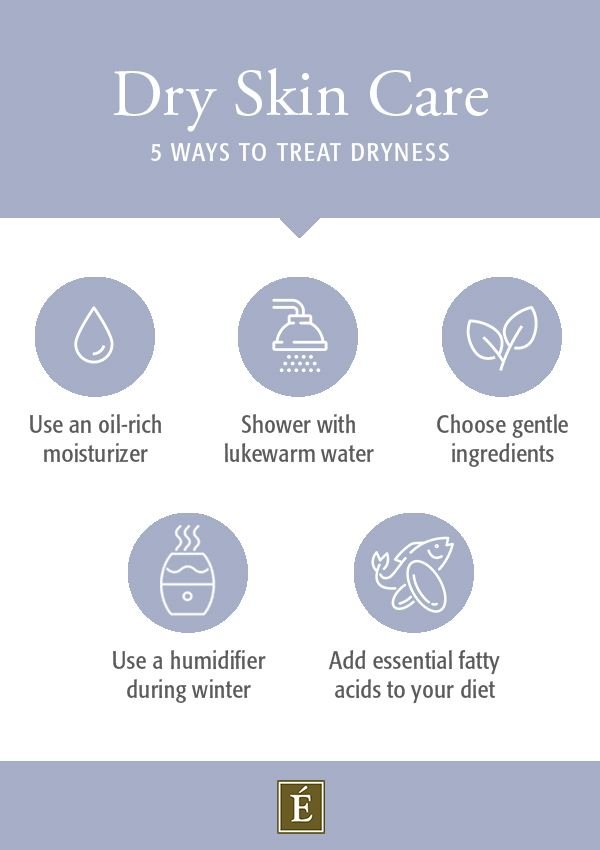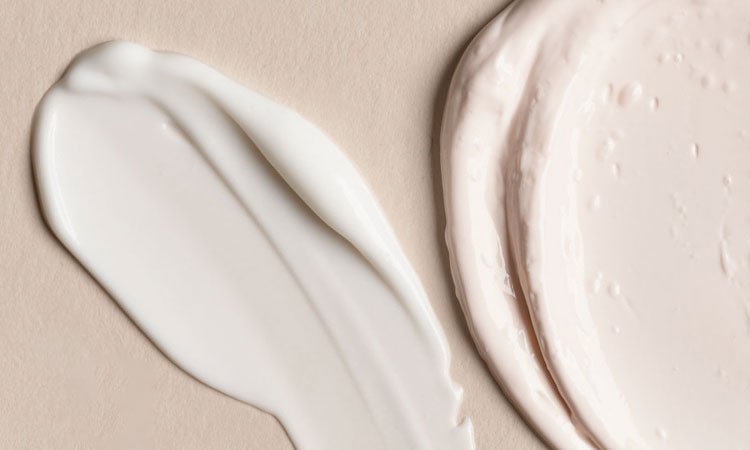Ultimate Guide For Dry Skin: Causes, Treatment and Skin Care Routine
Does your skin feel rough and flaky year-round? Everyone’s skin goes through occasional bouts of dryness, but a more persistent struggle may be a symptom of your skin type. Read on to learn more about dry skin and find our recommendations to reduce and relieve dryness.
What Causes Skin Dryness?
Like all skin types, dry skin is genetic. It is characterized by an inadequate supply of sebum (which keeps skin lubricated) and lipids (which keep the skin’s moisture barrier intact). Without these essential materials, the skin loses its ability to produce and retain sufficient moisture. On the surface, this deficiency presents as dry, flaky skin and a lackluster complexion.
Skin also becomes thinner and drier with age. Over time, the skin’s stores of hyaluronic acid diminish as a result of the body’s natural aging processes. This naturally-occurring substance, which attracts and retains moisture, is crucial for keeping skin soft and supple.
As hyaluronic acid depletes, the skin loses its ability to hold on to hydration and becomes more dry and brittle.
Dry skin is often confused with dehydration, but they are really quite different. While dehydration is preventable and easily treated, dry skin is a skin type that requires ongoing care to maintain. You may be stuck with dry skin, but the right skin care routine can make a world of difference.
Dry Skin: Signs & Symptoms
A dry skin type comes with the following signs and symptoms:
- Tightness, especially after cleansing
- Rough texture
- A dull, lackluster appearance
- Barely visible pores
- Flaking, scaling or peeling
- Fine lines, particularly around the eyes and lips
- A tendency toward redness and itching

How To Treat Dry Skin
Dry skin can be exacerbated by external factors like hormones, environmental stress and seasonal changes. Here are some easy ways to keep dry skin soft and supple.
1. Moisturize
Moisturizers are a no-brainer for dry skin care. Oil-based ointments, creams and lotions that are rich in essential fatty acids (EFAs) compensate for dry skin’s lack of oil and lipids. They lubricate the skin’s surface as well as fortify the skin’s moisture barrier, helping to replenish and seal in much-needed moisture.
Pro Tip: Apply moisturizer while your skin is still slightly damp to lock in extra hydration.
2. Watch Your Water Temperature
Extreme temperatures can exacerbate an already dry complexion by stripping the skin of essential oils. Joshua Zeichner, M.D., tells SELF: “The water in your shower should be the temperature of what you would imagine a heated pool to be – approximately 84 degrees F.” If hot showers are non-negotiable, limit them to no more than ten minutes to keep dry skin protected.
The water in your shower should be the temperature of what you would imagine a heated pool to be – approximately 84 degrees F.
3. Use Gentle Ingredients
Like extreme temperatures, harsh cosmetic ingredients can impact the skin’s moisture barrier, causing dryness and irritation. To protect your skin, avoid products that include chemical ingredients like parabens, petrolatum, mineral oils, propylene glycol or sodium lauryl sulfate.
4. Protect Your Skin in Winter
Dry winter air also adds to skin dryness. During winter months, there is less moisture in the air, which causes the moisture in your skin to evaporate more quickly. To compensate, Harvard Health recommends using a humidifier and setting it to around 60%, which is sufficient to replenish lost moisture in your skin’s top layer.
5. Adjust Your Diet
You can enhance your skin’s ability to retain moisture by adding healthy fats to your diet. Omega-3 and omega-6 oils support skin health by fighting inflammation and bolstering the skin’s moisture barrier. Foods to add to your grocery list include salmon, flaxseed, walnuts and sunflower seeds.

Dry Skin Care Routine
One of the best ways to tackle dry skin is to tailor your skin care routine to include moisture-rich products that replenish and repair. We recommend the following routine to heal and soothe dry skin.
1. Cleanse
First, remove impurities with a gentle, oil-based cleanser. Eminence Organics Product Support Representative Alicia Hawthorne recommends Wildflower Cleansing Balm. Formulated with poppy seed oil and elderflower, this transformative gel balm replenishes lost moisture as well as relieves redness due to dryness.
2. Exfoliate (Weekly)
Alicia encourages exfoliating weekly to “take care of any flakiness!” A gentle exfoliant like Strawberry Rhubarb Dermafoliant is your best bet for a dry complexion. Containing lactic acid, rice and chickpea flour, this physical and chemical exfoliant clears dead skin cells and smooths rough, dry skin.
3. Tone
Think of toner as the “conditioner” to your cleanser. A product like our Stone Crop Hydrating Mist includes conditioning ingredients like stone crop, lavender and jasmine to restore moisture and nourish dry skin.
4. Treat
When it comes to choosing an oil, concentrate or serum for dry skin, Alicia recommends reaching for a product that is rich in both fatty acids and anti-inflammatory ingredients. Her suggestion is Facial Recovery Oil, which includes calming and nourishing oils that are healing for dry skin.
5. Moisturize
Choose an oil-rich cream that will replenish moisture and repair your skin’s lipid barrier. Our Coconut Age Corrective Moisturizer includes deeply moisturizing coconut oil and shea butter. Shea butter, in particular, is an excellent emollient for the skin; it is high in triglycerides and fatty acids which help restore and retain moisture.
Are you ready to update your dry skin routine? Find these products and more at an Eminence Organics partner spa near you.






